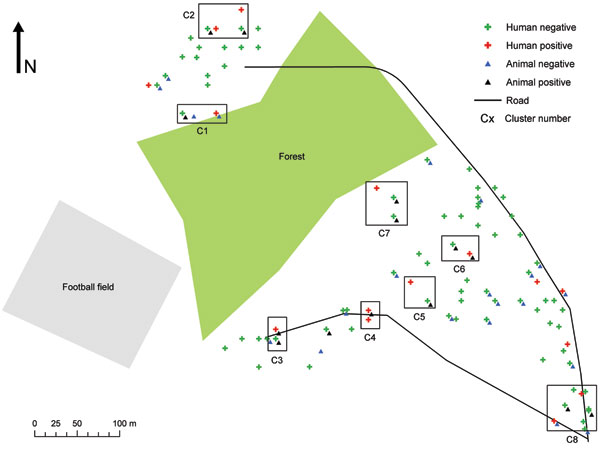Volume 16, Number 2—February 2010
Research
Domestic Animals and Epidemiology of Visceral Leishmaniasis, Nepal
Figure 2

Figure 2. Distribution of sampled households and domestic animals, by visceral leishmaniasis status as determined by PCR, Dharan-17, Nepal, September 2007–February 2008.
Page created: December 10, 2010
Page updated: December 10, 2010
Page reviewed: December 10, 2010
The conclusions, findings, and opinions expressed by authors contributing to this journal do not necessarily reflect the official position of the U.S. Department of Health and Human Services, the Public Health Service, the Centers for Disease Control and Prevention, or the authors' affiliated institutions. Use of trade names is for identification only and does not imply endorsement by any of the groups named above.